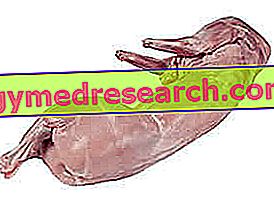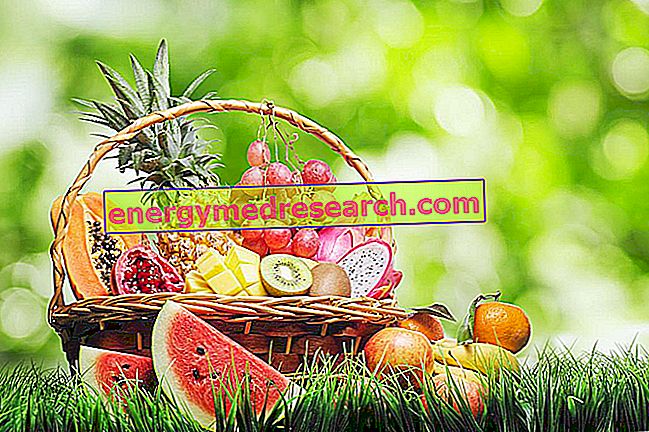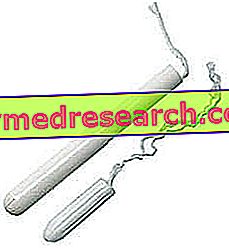Generality
The rabbit is a rabbit-like mammal-like creature belonging to the Leporidae family and to the genus Oryctolagus (European) or Sylvilagus (American). The binomial nomenclature of the European rabbit (the most widespread in Italy) is Oryctolagus cuniculus.

Rabbits are all multiparous, herbivorous (very voracious) and coprophagous habits; moreover, they are extremely prolific animals that mate several times in the same year. Ultimately, due to rapid growth and reproductive cycle, they are creatures notably predisposed to breeding (both intensive and extensive).
For humans, the rabbit is a food source of white and lean meat, therefore suitable for most nutritional needs. It is however necessary to specify that the rabbit is more often the object of intensive breeding characterized by reduced growth spaces and subjected to overfeeding; moreover, in intensive breeding, the use of considerable quantities of drugs (for example, antibiotics) is not excluded (in fact, presumably). With such an awareness, the consumer can choose the respective sources of supply: rabbit meat from traditional breeding or rabbit meat from extensive breeding; even better (but rather expensive) would be the rabbit meat obtained by respecting the "organic disciplinary".
Rabbit meat is considered by many (such as veal or trout) a hypoallergenic food; this means that statistically its proteins are NEVER ALREADY subject to food allergy, which is why it is quite used in the formulation of homogenized food destined for infant feeding.
Nutritional characteristics
Rabbit meat is extremely lean and low in calories; it has an excellent percentage of high biological value proteins and in parallel a very low amount of cholesterol. The predominant amino acids are: glutamic acid, aspartic acid, lysine and leucine; the limiting amino acid is tryptophan. Having no more information on the lipid profile of the four sizes below, it is only conceivable that this is in favor of saturated fatty acids compared to polyunsaturated and monounsaturated.
Rabbit meat contains potassium, iron and phosphorus in good quantities, while from the vitaminic point of view, discrete concentrations of niacin (vit. PP) are appreciated.
Nutritional composition of the Rabbit - Reference values of the INRAN Food Composition Tables
| Comparison Raw whole rabbit, Whole cooked rabbit, Whole frozen rabbit, Leg rabbit. | |||||
| Chemical composition and energy value of foods per 100g of edible portion | Rabbit, whole, raw | Rabbit, whole, cooked | Rabbit, whole, frozen | Rabbit, thigh | |
| Edible part | 71, 0% | 71, 0% | 69, 0% | 83.0% | |
| water | 74, 9g | 62, 1g | 74, 8g | 72, 0g | |
| Protein | 19, 9g | 27, 9g | 20, 3g | 21, 0g | |
| Lipids TOT | 4.3 g | 6.0g | 3, 9g | 5, 9g | |
| B.C. saturated fats | - g | - g | - g | - g | |
| B.C. monounsaturated fats | - g | - g | - g | - g | |
| B.C. polyunsaturated fats | - g | - g | - g | - g | |
| Cholesterol | 52, 0mg | 73, 0mg | 51, 0mg | 60, 0mg | |
| TOT Carbohydrates | 0.0g | 0.0g | 0.0g | 0.0g | |
| Starch / Glycogen | 0.0g | 0.0g | 0.0g | 0.0g | |
| Soluble sugars | 0.0g | 0.0g | 0.0g | 0.0g | |
| Dietary fiber | 0.0g | 0.0g | 0.0g | 0.0g | |
| Power | 118, 0kcal | 166, 0kcal | 116, 0kcal | 137, 0kcal | |
| Sodium | 67, 0mg | - mg | 67, 0mg | - mg | |
| Potassium | 360, 0mg | - mg | 360, 0mg | - mg | |
| Iron | 1.0 mg | - mg | 1.0 mg | - mg | |
| Football | 22, 0mg | - mg | 22, 0mg | - mg | |
| Phosphorus | 220, 0mg | - mg | 220, 0mg | - mg | |
| Thiamine | 0, 03mg | - mg | 0, 03mg | - mg | |
| Riboflavin | 0.3mg | - mg | 0.3mg | - mg | |
| Niacin | 6, 3mg | - mg | 6, 3mg | - mg | |
| Vitamin A | - µg | - µg | - µg | - µg | |
| C vitamin | 0, 0mg | 0, 0mg | 0, 0mg | 0, 0mg | |
| Vitamin E | - mg | - mg | - mg | - mg | |



